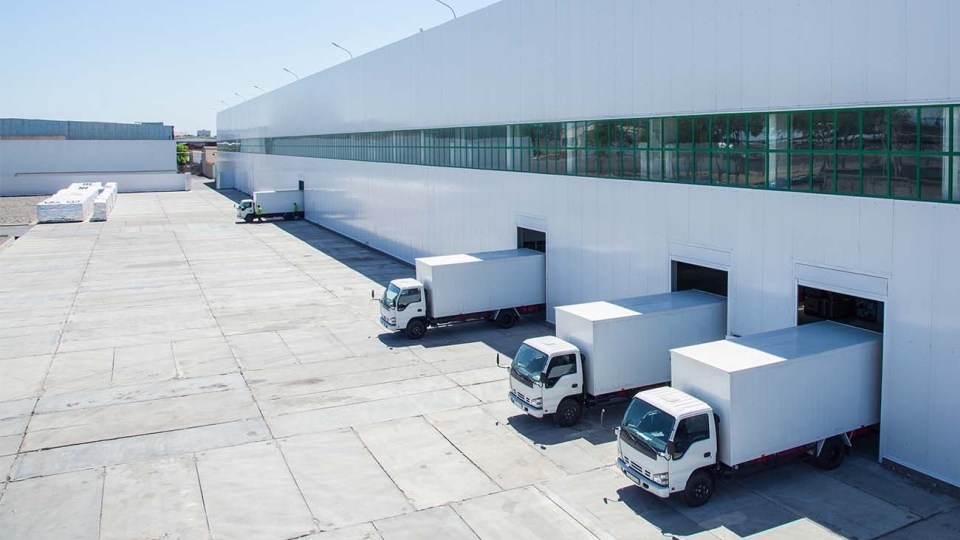Industrial Rents Rise as Demand Normalizes
Although deliveries of new industrial space boomed in recent years, demand has since normalized, leading to higher vacancy rates across the U.S. At the same time, rents have also climbed, highlighting the complex dynamics at play in the industrial real estate market, as reported by CommercialEdge in the latest national industrial report.
“Stabilizing construction deliveries and start volume are healthy market responses to what has been happening over the last three years,” said Peter Kolaczynski, director at CommercialEdge.
Despite the expected slowdown in short-term rent growth due to moderating demand, the long-term outlook for the industrial sector remains optimistic. This positive view is driven by factors such as the increasing focus on reshoring manufacturing and the sustained growth potential of ecommerce.
“We believe demand will remain strong, allowing for a boost in construction starts over the next few years,” Kolaczynski added.
National Industrial Vacancy Up to 4.8%, Midwest Record Lowest Rates
The national industrial vacancy rate climbed to 4.8%, reflecting a 20-basis point increase compared to the previous month and an 80-basis point rise over the past year.
More precisely, Boston’s industrial market had the highest vacancy at 8.7% in January, followed by St. Louis (7.6%) and Denver (6.3%). Likewise, other major markets like Houston; Los Angeles; and Inland Empire, Calif., also surpassed 5%.
In contrast, the Midwest boasted the lowest vacancy rates. Namely, Columbus, Ohio; Indianapolis; and Kansas City, Mo., all shared rates of just 2.6%. Similarly, Southern cities Charlotte, N.C., and Nashville, Tenn., followed with vacancy levels at 3.3% and 3.4%, respectively. Phoenix also joined the group with a slightly higher rate of 3.7%.
Inland Empire Leads National Rent Surge with 12.9% Y-o-Y Jump
Industrial space rents are experiencing a nationwide uptick: In-place rents increased by 7.6% year-over-year in January to reach an average of $7.74 per square foot. This upward trend was further solidified by the even higher average rate for new leases at $10.12 per square foot.
Specifically, southern California experienced the highest rent growth despite rising vacancies. Here, Inland Empire led the surge with a 12.9% jump on average rents, followed closely by Los Angeles (12.1%) and Orange County (9.8%).
Looking beyond southern California, Miami held the third spot with an 11.4% increase. Then, Seattle recorded a 9.4% rise in rents. Other notable markets included New Jersey (9.1%), Phoenix (8.6%) and the Dallas-Fort Worth area mirroring the national average (7.6%).
Western regions remained the most expensive for industrial space in the U.S. with the Orange County, Calif., industrial market holding the top spot at $14.95 per square foot. Los Angeles and the Bay Area trailed closely behind at $13.95 and $12.99, respectively.
Interestingly, a significant gap existed between new and existing lease rates in these Western markets. The Bay Area exemplifies this with new leases averaging $18.81 per square foot — a $5.82 premium compared to existing rents. Similar trends were observed in Los Angeles and Inland Empire, Calif., where new leases cost $5.79 and $5.73 more than existing ones, respectively.
Chicago Leads Cautious Start to 2024 Sales Nationally
Industrial transactions in the U.S. began cautiously in 2024, reaching $2.6 billion in the first month with an average sales price of $145 per square foot.
Despite this national slowdown, Chicago began the year as the U.S. leader in industrial property transaction volume, recording $243 million in sales by January. This surge in activity was primarily driven by LBA Realty’s acquisition of two logistics and cold storage facilities near O’Hare Airport. The deal — valued at $95 million — translated to an average price of $201 per square foot and encompassed more than 480,000 square feet of Chicago industrial space.
Following Chicago in terms of sales activity in January, several Western markets also displayed noteworthy activity with the Bay Area reaching $229 million; Denver at $210 million; Phoenix at $161 million; and Inland Empire, Calif., at $138 million.

